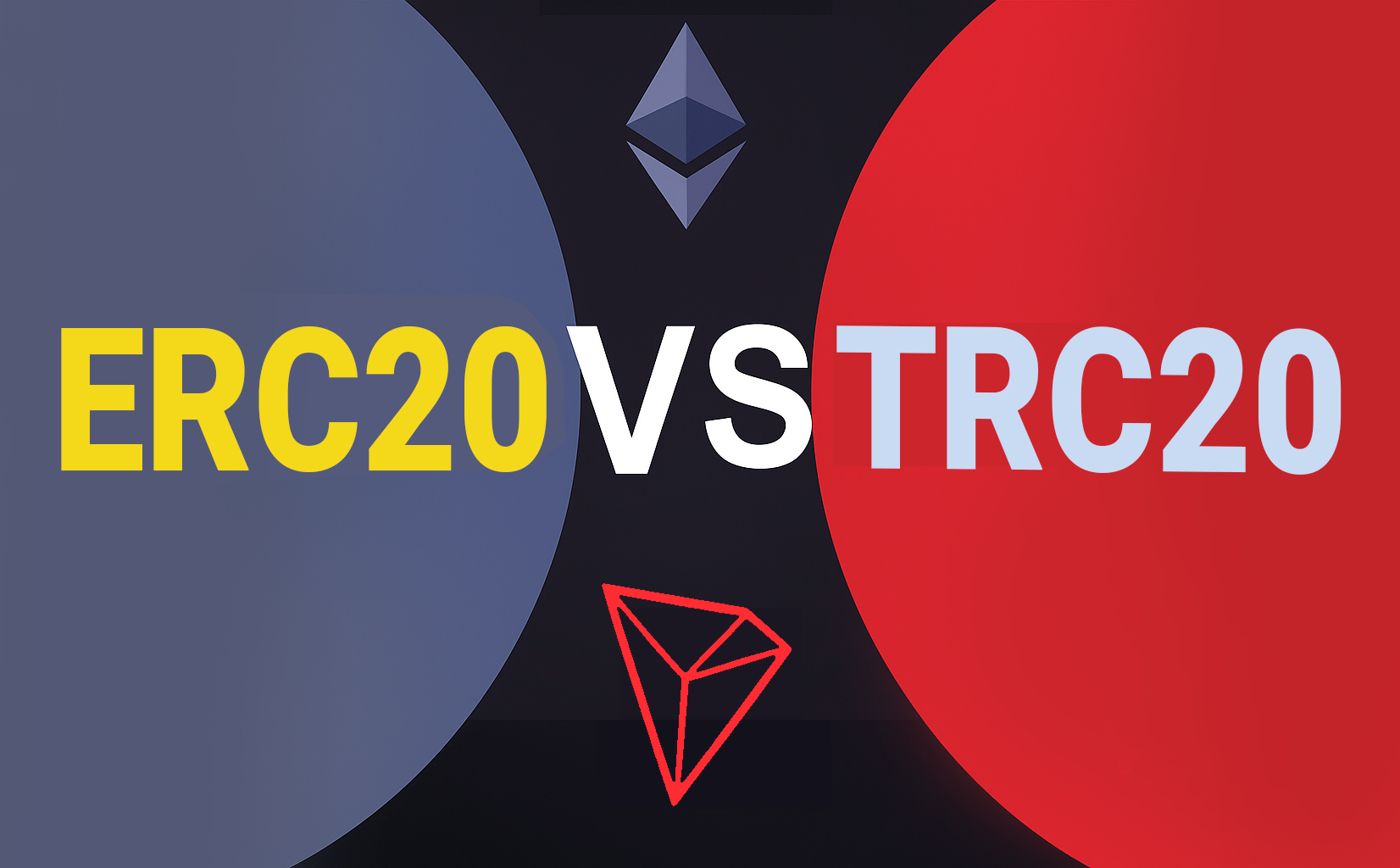🆕 Crypto vs. Internet adoption: A year-by-year comparison to mainstream
Have you ever wondered what the "iPhone moment" would be for crypto? This article dives into the historical parallels with the internet.

If you’ve ever sent USDT or another token and had to pick between 🔵 ERC20 - Ethereum (ETH) and 🔴 TRC20 - TRON (TRX), you probably paused and thought: “Which one’s right?”
The short answer: both are versions of the same token that live on different blockchains, and that small detail changes everything about fees, speed, and compatibility.
Everyday senders
You just want to move USDT without losing it. This explains which network to pick and how to match addresses.
Technical readers
You want the real differences behind fees, security, and decentralization. There is a short technical section below.
Operators and businesses
You care about costs at scale, user errors, and multi-chain support. There is a quick checklist for running products on these rails.
ERC20 and TRC20 tokens hold the same value, 1 USDT is still 1 USDT, but they can’t be mixed across blockchains. Sending a TRC20 token to an ERC20 address (or vice versa) can mean a permanent loss.
If your withdrawal is stuck, or you think you sent a token to the wrong chain, check out our guide on 8 reasons your crypto withdrawal is stuck and how to fix it.
It covers what to do when a transaction doesn’t go through or lands on the wrong network.
Tip: Certain blockchain allows for other coins and tokens to operate operate on them. This means you can send USDT tokens on both ERC20 and TRC20, as well as other tokens such as USDC.
ERC20 tokens run on the Ethereum network, the most widely used blockchain for smart contracts. It’s the older standard, launched back in 2015, and it’s what most exchanges and wallets originally supported.
If you’re sending tokens to a wallet that only supports Ethereum addresses (those starting with 0x), you must pick ERC20. It’s the most reliable option for long-term compatibility, but not the cheapest.
Extra tip: Ethereum’s higher fees come from how decentralized it is. Thousands of independent validators run its network, and every transaction competes for limited block space. You’re paying for stronger security and a broader ecosystem.
TRC20 tokens run on Tron, a blockchain designed to handle high-volume transactions at a fraction of the cost.

Tron’s cheaper transfers aren’t magic, it’s because the network is less decentralized and more optimized for throughput. Fewer validators and shorter block times make it faster, but it trades away some of Ethereum’s resilience and ecosystem reach.
That’s why many users might treat assets on TRC20 as a transaction network, not the place to build or store assets long term. It’s great for moving stablecoins quickly between exchanges, but ERC20 still wins for robustness, integration and long-term support.
Extra tip: Even though TRON (TRX) - TRC20 network can be fast, if you are moving funds from an exchange, the exchange itself pay impose a delay. This could mean it may take longer than expected to move funds. Also the exchange platform can impose extra fees on top of the network fees.
There’s also BEP20, which lives on the BNB Smart Chain. It’s another token standard that’s easy to mix up with ERC20 and TRC20 because of similar naming.
If you want a simple side-by-side explanation, read our post:
ERC20 vs BEP20: A Simple Guide to Understanding the Differences
That piece breaks down how Binance’s network fits into the picture and why wallet compatibility is key.
Before sending tokens:
It’s basic, but it saves countless headaches. Once a token is sent to the wrong network, recovery isn’t always possible.
What if you send tokens on the wrong network?
Related reads
If you’re building or running your own crypto platform, these tokens running on different blockchains matter a lot. Your exchange or wallet software needs to handle multiple blockchains without confusing users, and confusing your operational team. That’s exactly what HollaEx® was built for multi-chain compatibility and simple network handling right out of the box.
Small tweak with big payoff, a drop-down that defaults to the last used network prevents many errors.
ERC20 is the standard on Ethereum, and TRC20 is its faster, cheaper cousin on TRON. Choosing the right one depends on your wallet, your exchange, and how much you’re willing to pay in gas fees.
If you ever plan to manage or build a crypto exchange yourself, understanding these token standards isn’t optional, it’s part of how networks stay compatible. HollaEx® makes that part easy with multi-network support built into its white-label exchange system. It’s one less thing to worry about while running your own platform.
